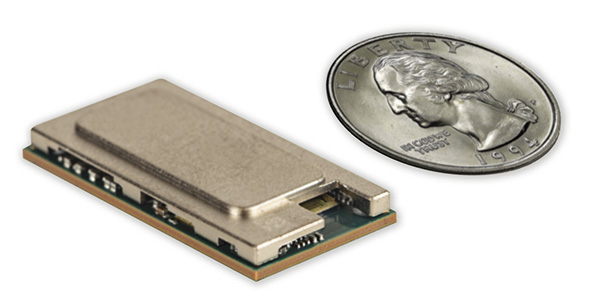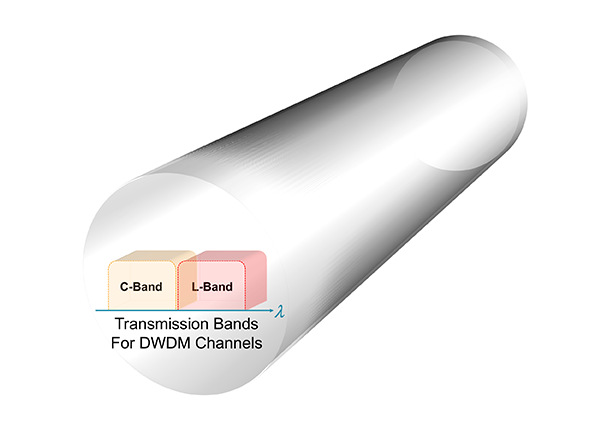Coherent Multi-Source Agreement (MSA) pluggable modules have played a key role in expanding deployment scenarios for network operators, with the introduction of 400G modules driving recent network transformation opportunities. We have seen how the introduction of a wide range of 400G MSA pluggable products have driven the recent adoptions of IP-over-DWDM architectures enabling direct router-to-router metro connections over optical fiber as well as higher port-density transponder designs.
The Optical Internetworking Forum (OIF) kicked off the 400G MSA pluggable generation with development of the 400ZR implementation agreement enabling point-to-point amplified links up to 120km operating at 60+Gbaud data rates. Around the same timeframe, the OpenROADM MSA defined 400G interfaces for ROADM networks and extended reaches; the OpenZR+ MSA leveraged these higher performance interfaces to enable interoperable enhanced performance links for 400G pluggable modules (Figure 1).
The introduction of high-transmit optical power (>0dBm) ZR+ modules such as Acacia’s Bright 400ZR+ module further expanded the 400G MSA pluggable space to include brownfield ROADM network architectures (with existing transponder channels ~0dBm). Driven by increasing bandwidth demands from applications such as AI, network operators are now looking towards a new generation of MSA pluggable products that further expand applicable networking scenarios that operators can leverage to scale and meet these demands.
How Industry Standards Benefit MSA Pluggable Module Adoption
The latest array of MSA pluggable products introduces a new set of capabilities that network operators can utilize to increase capacity and extend reach. These products provide the ability to deploy 800G with ZR, ZR+, and high-transmit optical power capabilities, as well as extending the capabilities of existing 400G router interfaces to support ultra-long-haul (ULH) reach capabilities. This new generation of modules continues to leverage industry standardization while also borrowing capabilities from performance-optimized coherent solutions. These capabilities include high-baud rate transmission allowing for a doubling of baud rates from the previous Class 2 (~60+Gbaud range) generation to Class 3 (~120+Gbaud range) baud rates, the use of probabilistic constellation shaping (PCS) for enhanced transmission performance, and L-band support for spectrum range expansion.

Industry standardization of coherent solutions plays a key role in enabling economies of scale. Users of 400G coherent MSA pluggable modules such as 400ZR/ZR+ have benefited from the efforts of OIF, OpenZR+ MSA, and OpenROADM MSA to provide industry agreements on module specifications resulting in a diverse supply base. We have seen similar efforts to garner industry standardization as users transition to 800G MSA pluggables. There are three main elements that differentiate 800G relative to 400G and are adapted from previously developed performance-optimized solutions.
- Interop PCS for Enhanced Performance
A key difference between 400G and 800G interoperability approaches for an enhanced performance “ZR+” is that instead of using enhanced performance forward error correction, oFEC, to provide improved 400G performance, 800G uses industry standard interoperable probabilistic constellation shaping (PCS) for enhancing performance. PCS is a transmission shaping technique that provides additional link performance beyond traditional transmission modes such as 16QAM. Industry standardization of an interoperable PCS transmission shaping function, once relegated to proprietary performance-optimized transponder platforms including those for submarine applications, is a tremendous leap forward in the progress of MSA pluggable module capabilities. Multi-vendor 800G module supply chain diversity from a DSP ASIC perspective is possible when the 800G ZR+ performance enhancement mode utilizes the industry standard interoperable PCS mode. - High Baud Rate Design
PCS is not the only technology that has been adapted from performance-optimized solutions for MSA pluggables. 800G as well as a 400G ULH pluggable solutions require a high-baud rate design operating in the Class 3 ~120+ Gbaud data rate range. Acacia’s performance-optimized CIM 8 module capable of 140Gbaud speeds has already proven that its deployed technology far exceeds the requirement for the new generation of MSA pluggables. Operation at these high baud rates benefits heavily from the advanced integration and RF signal optimization techniques that Acacia introduced in our 400G MSA pluggable product family.

3. C & L Band Support
A third element of the latest 800G MSA pluggable generation that is borrowed from performance-optimized designs is the capability to transmit in the L-band wavelength range, in addition to the traditional C-band DWDM range. By adding L-band supporting infrastructure to a network, the network capacity is approximately doubled. Network operators now have an option beyond utilizing a transponder platform if they wish to use L-band expansion to increase network capacity.

Pluggable Interoperable Interfaces are Driving Adoption of 800G Modules
Acacia’s latest family of coherent solutions are powered by its 9th generation DSP ASIC called Delphi. These modules include support for OIF 800ZR, interoperable 800G ZR+ using the OpenROADM interop PCS mode, and 400G ULH for ultra-long-haul reaches. These modules utilize Acacia’s 3D Siliconization providing a highly integrated design enabling high-baud rate modulation. With support for QSFP-DD and OSFP form factors, as well as >+1dBm transmit optical power and L-band support, Acacia’s Delphi generation of products leverage the deployment successes of our performance-optimized CIM 8 module to provide MSA pluggable products that offer increased capacity and longer reaches.

Similar to the successful path we saw 400G pluggables experience, these modules are delivering the performance and interoperability that is critical for driving economies of scale and widespread adoption. With data center bandwidth continuing to grow rapidly, fueled by emerging new applications such as AI, these high-performance pluggable modules are on track to become an important tool for network operators to cost-efficiently scale their networks to meet this surging demand.
See Us at ECOC 2024!
Acacia is excited to be participating in the OIF interoperability demo at ECOC 2024 showcasing both its 400G and 800G pluggables; demos will take place in the OIF booth #B83. Acacia will also be demonstrating the Interoperable 800G ZR+ module in our meeting room at ECOC. Click here to set up a meeting.
We hope to see you in Frankfurt!


